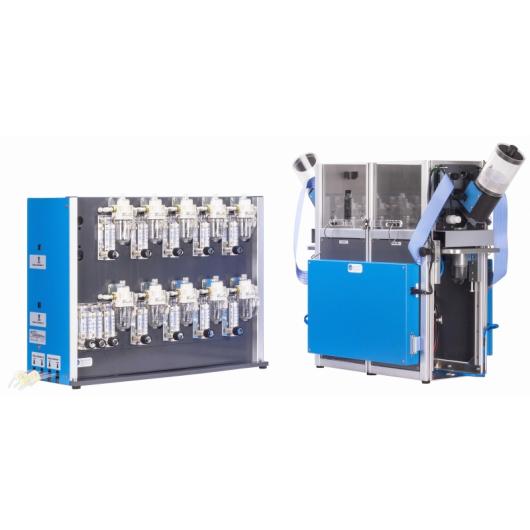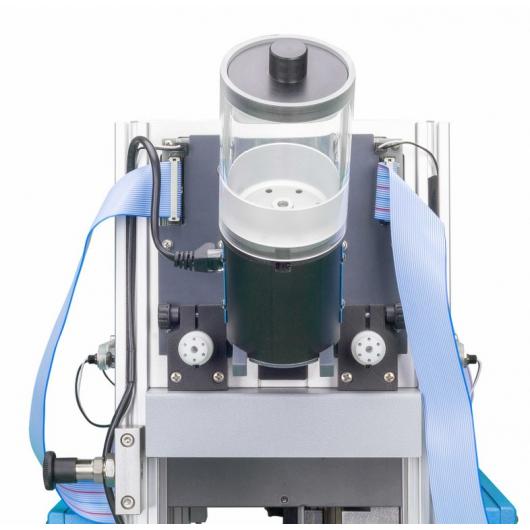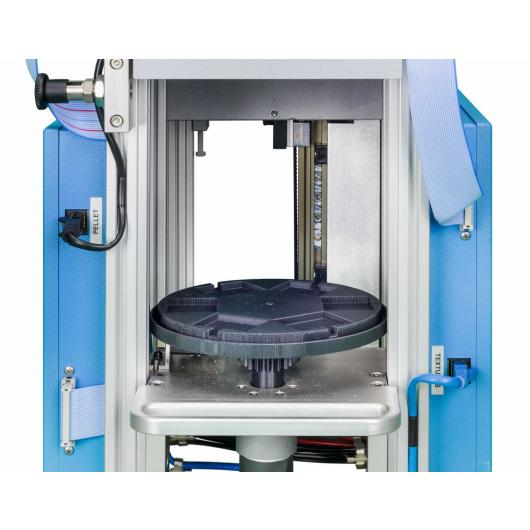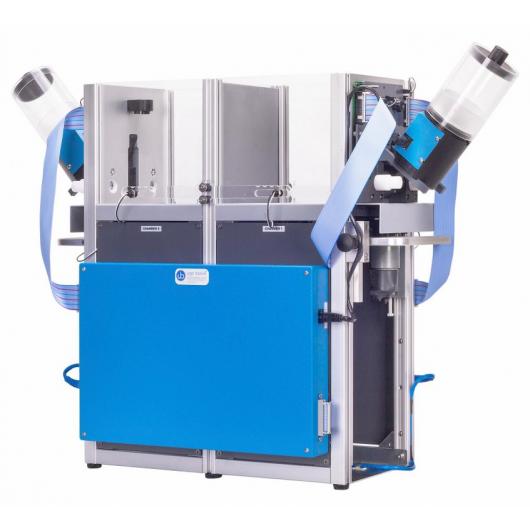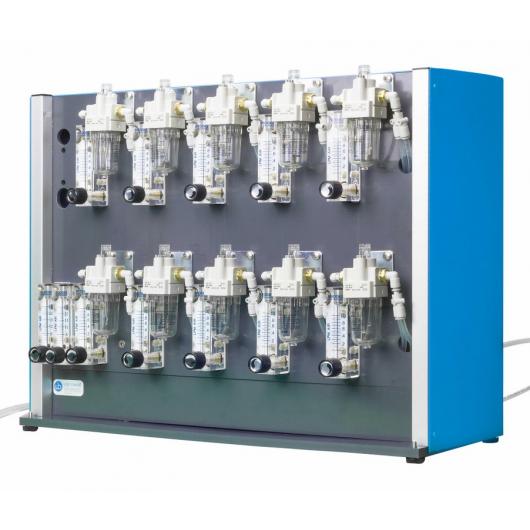




OPERON (Papaleo-Scheggia’s method) for Attentional Set-Shifting Task
Attentional set shifting is a measure of cognitive flexibility and executive functions, which refers to the ability to switch between arbitrary internal rules; similar tasks for rodents are currently limited due to their manual-based testing procedures and they are hampering translational advances in psychiatric medicine.
This novel ID/ED Operon task is an effective preclinical tool for drug testing and large genetic relevant screenings to study the executive dysfunctions and cognitive symptoms of psychiatric disorders!
The instrument is composed of two compartments, divided by an automated sliding door, with an operant wall mounted on each side; this includes 3 automated tridimensional stimulators (visual, odor and texture), left and right, with 2 nose pokes and a pellet dispenser in the middle for the reward.
We have designed an innovative Revolver System which provides automated tactile stimulation and an Odor Delivery System which provides 10 different odors in 2 independent channels.
A dedicated version of ANY-maze software automatically manages all the Operon tools following a precompiled protocol and collects the data.
Features
- 2 compartments cage, divided by an automated sliding door
- Operant walls including lights, odor delivery and revolving floor
- Proprietary Revolver System
- Odor Delivery System, 2-channels and 10 independent flowmeters
- Left and right nose pokes and pellet dispenser for each compartment
- Dedicated ANY-maze version for Operon
Benefits
- Continuous trial repetition
- Automated tridimensional stimulation (visual, odor and texture)
- Automated floor tactile stimulation
- Automated odor stimulation via 10 different odors independently on the two chambers
- Automated reward when the correct choice is made
- Fully automated managing of all the OPERON cues, sensors and data acquisition
Application
Attentional set shifting is a measure of cognitive flexibility and executive functions, refering to the ability to switch between arbitrary internal rules (“cognitive-attentional sets”). The most widely used neuropsychological tasks for the
evaluation of this function in humans are the Wisconsin Card Sorting Test (WCST) and the CANTAB Intra-/Extra-Dimensional set-shifting task (ID/ED).
These tasks have been used to identify specific cognitive abnormalities in a wide range of mental disorders including autism, schizophrenia, Parkinson’s disease, obsessive-compulsive disorders, and attentiondeficit/hyperactivity disorders.
The clinical relevance and solid methodologic approach of the WCST and the ID/ED tests have attracted interest in preclinical research. Importantly, these tasks allow for the selective measurement of discriminative learning, reversal learning, and switching of attention within the same dimension (intradimensional shift [IDS]) and between different perceptual dimensions (extradimensional shift [EDS]) within the same subject. This distinction is crucial because a double dissociation or functional specialization between the lateral (in monkeys and humans)/medial (in rodents) and orbital regions of the prefrontal cortex (PFC) have been demonstrated. That is, whereas the orbitofrontal cortex is selectively involved in the reversal phases of these tasks, the lateral/medial PFC region governs the EDS stages.
This novel operant-based two-chamber ID/ED “Operon” task for mice is able to measure attentional set shifting in mice and the effects of genetic and pharmacologicmanipulations of dopamine and glutamate. In genetically modified mice with reduced catechol-O-methyltransferase activity there wasselective improvement on extradimensional shift abilities and impairment of serial reversal learning.
Method paper
- Diego Scheggia, Audrey Bebensee, Daniel R. Weinberger, and Francesco Papaleo: "The Ultimate Intra-/Extra-Dimensional Attentional Set-Shifting Task for Mice" Biological Psychiatry, Volume 75, Issue 8, Pages 660-670, 15 April 2014 - https://doi.org/10.1016/j.biopsych.2013.05.021
- Diego Scheggia, Francesco Papaleo et alia: "Variations in Dysbindin-1 are associated with cognitive response to antipsychotic drug treatment" Nat Commun. 2018 Jun 11;9(1):2265. doi: https://doi.org/10.1038/s41467-018-04711-w Erratum in: Nat Commun. 2018 Aug 29;9(1):3560

